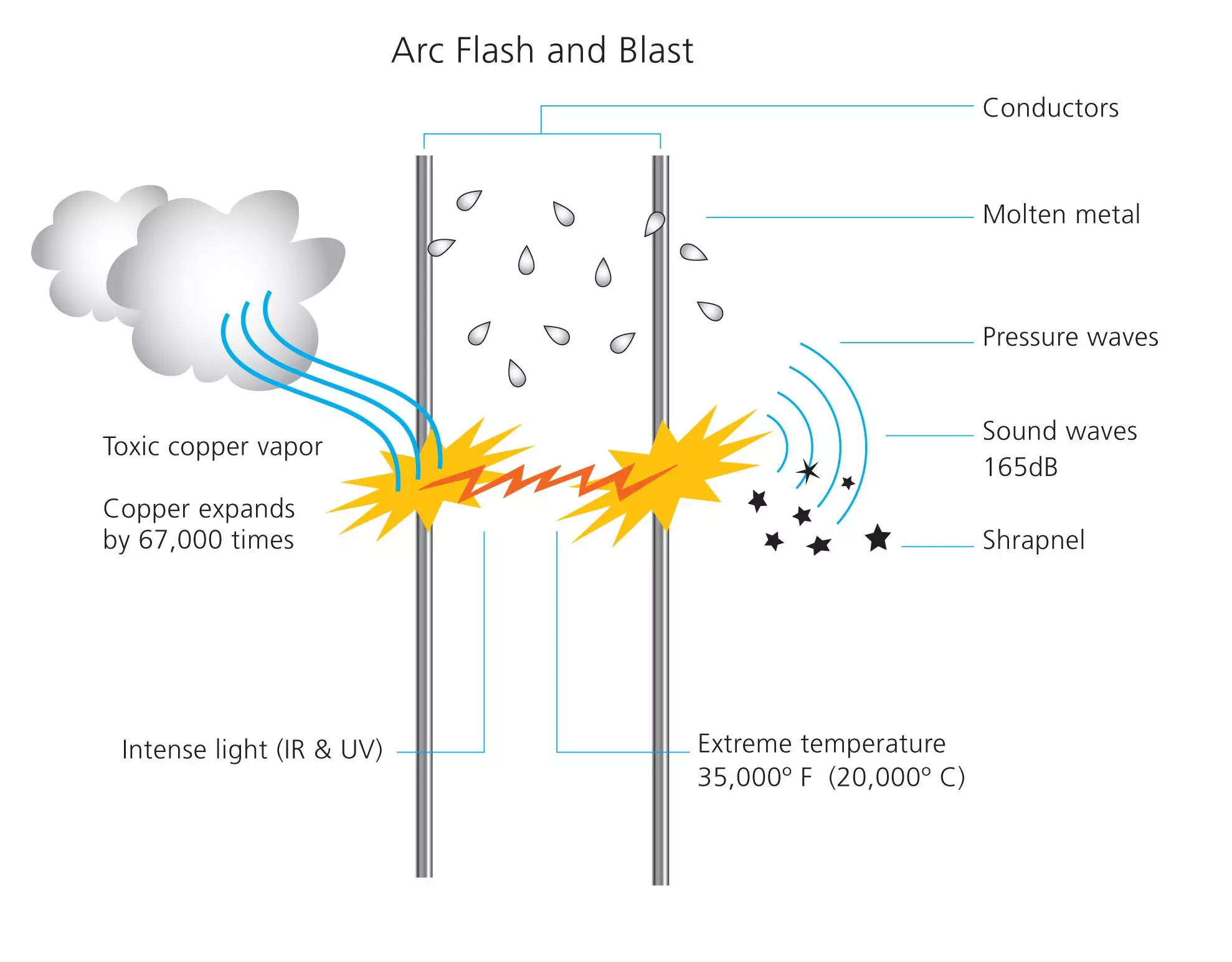Shanghai, China
+86-17317656853
inquiry@cgprotection.com



Flash can be initiated by the following:
Dust and impurities: Dust and impurities on insulating surfaces can provide a path for current, allowing it to flashover and create arc discharge across the surface. This can develop into greater Flash. The fumes or vapor of chemicals can reduce the breakdown voltage of air and cause arc flash.

Corrosion: Corrosion of equipment parts can provide impurities on insulating surfaces. Corrosion also weakens the contact between conductor terminals, increasing the contact resistance through oxidation or other corrosive contamination. Heat is generated on the contacts and sparks may be produced. This can lead to arcing faults with nearby exposed conductors of a different phase or ground.
Condensation of vapor and dripping water can cause tracking on the surface of insulating materials. This can create a flashover to ground and potential escalation to phase-to-phase arcing.
Accidental touching: Accidental contact with live exposed parts can initiate arc faults.
Dropping tools: Tools dropped accidentally can cause a momentary short circuit, producing sparks and initiating Flash. Over-voltages across narrow gaps: When the air gap between conductors of different phases is very narrow (due to poor workmanship or damage of the insulating materials), Flash may strike across during over-voltages.
Electric Flash are also caused by the following:
Electric Flash produce some of the highest temperatures known to occur on earth— up to 35,000 degrees Fahrenheit.3 This is four times the surface temperature of the sun.
The intense heat from an arc causes the sudden expansion of air. This results in a blast with very strong air pressure (lightning is a natural arc). All known materials are vaporized at this temperature. When materials vaporize they expand in volume (copper— 67,000 times, water—1,670 times4). The air blast can spread molten metal to great distances with force.
For a low voltage system (480/277 V), a 3 to 4-inch arc can become “stabilized” and persist for an extended period of time. The energy released is a function of system voltage, fault current magnitude, and fault duration. Flash in enclosures, such as in a motor control center (MCC) or switchgear, magnify the blast and energy transmitted as the blast is forced to the open side of the enclosure and towards the worker.
Tags:
Shanghai C&G's personal protective clothing and PPE products are trusted by customers in the world. Our products are exported worldwide, with a strong presence in the United States, China, Japan, Germany, the United Kingdom, India, France, Italy, Brazil, and Canada. In addition, we have a significant customer base in other countries across each continent, including Australia, New Zealand, South Africa, Nigeria, and Egypt in Africa; Argentina, Chile, and Mexico in South America; Russia, South Korea, and Indonesia in Asia; Spain, Poland, and Turkey in Europe; and Saudi Arabia and the United Arab Emirates in the Middle East. Wherever you are in the world, we have the products you need to stay safe and protected. Contact us today to learn more about our products and how we can help you meet your safety needs.










© 2023 Shanghai C&G. All Rights Reserved.